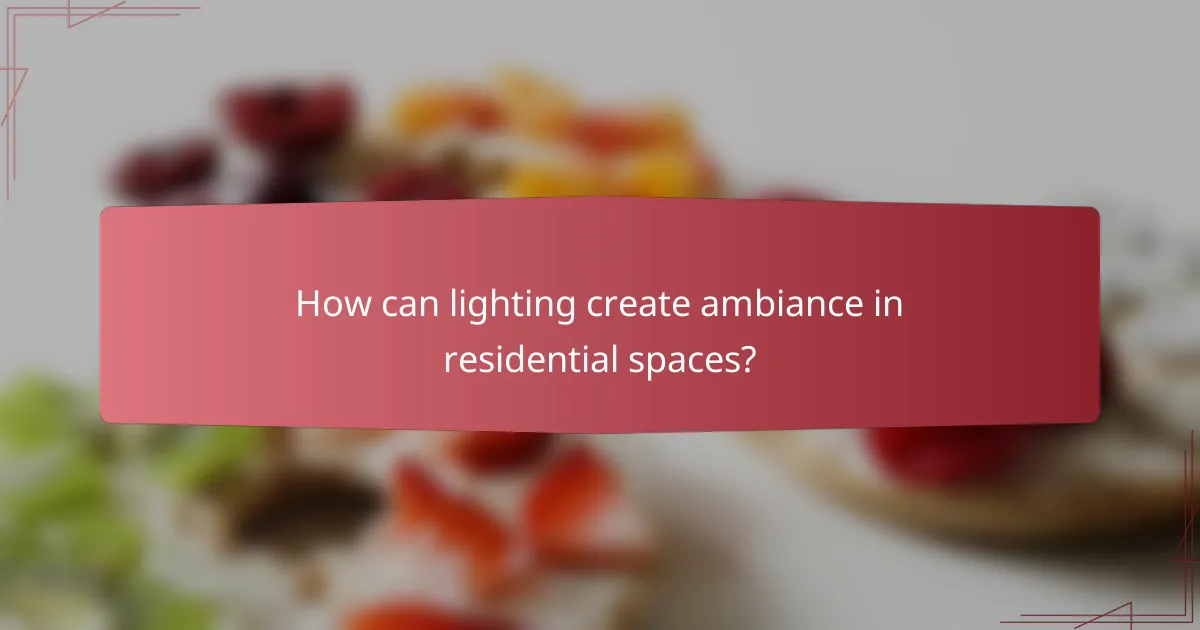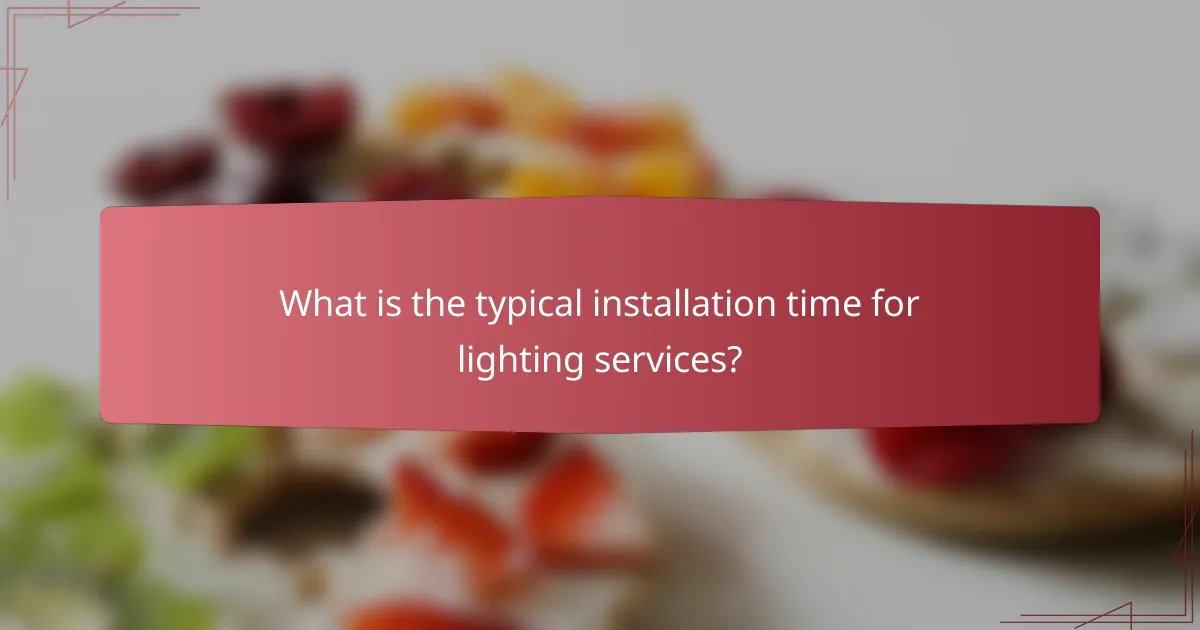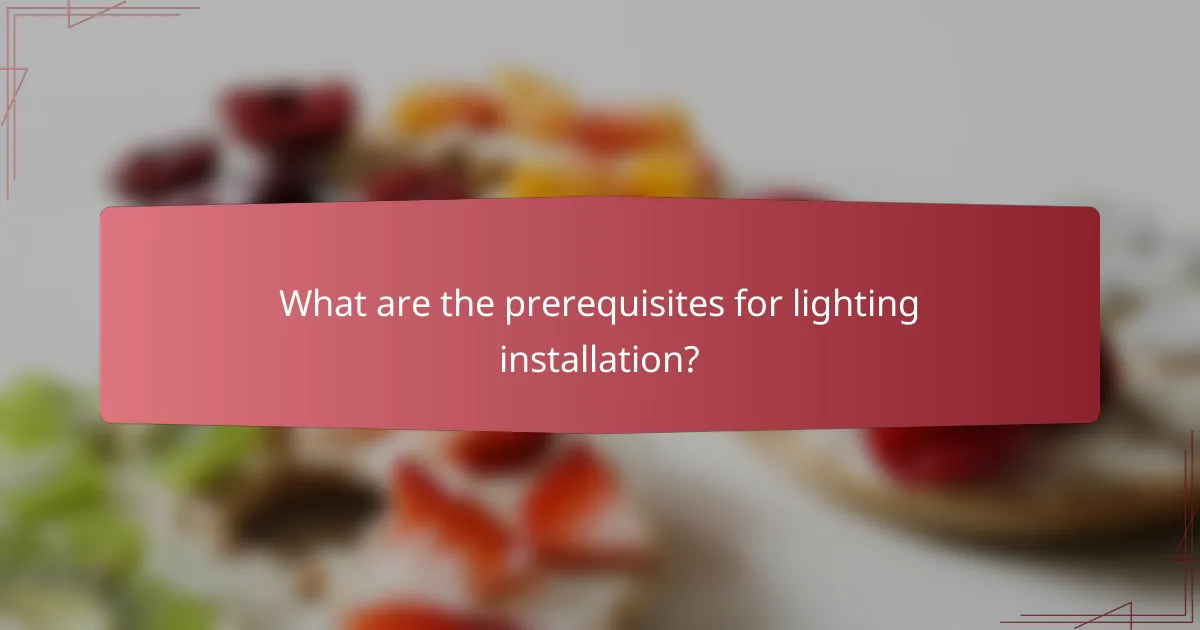In the UK, a variety of lighting technologies are available to meet diverse needs, focusing on energy efficiency, ambiance creation, and ease of installation. The right lighting can significantly enhance the mood and aesthetic of a space, transforming it into a warm and inviting environment or an energizing one. Installation times can vary, with standard setups typically taking 1 to 2 hours, while more complex projects may extend over several days.

What lighting technologies are available in the UK?
In the UK, various lighting technologies cater to different needs, including energy efficiency, ambiance creation, and installation ease. The most common types include LED lighting, smart lighting systems, solar-powered lights, incandescent bulbs, and fluorescent lighting.
LED lighting
LED lighting is highly energy-efficient and has a long lifespan, making it a popular choice for both residential and commercial spaces. These lights consume significantly less electricity compared to traditional bulbs, often reducing energy bills by up to 80%.
When considering LED options, look for lumens per watt to gauge brightness and efficiency. They are available in various color temperatures, allowing you to create the desired ambiance, from warm to cool light.
Smart lighting systems
Smart lighting systems allow for remote control and automation, enhancing convenience and energy savings. These systems can be integrated with home automation platforms, enabling features like scheduling, dimming, and color changes through mobile apps or voice commands.
Installation typically involves replacing existing fixtures with smart bulbs or adding smart switches. Ensure compatibility with your home network and consider the initial investment against long-term savings and convenience.
Solar-powered lights
Solar-powered lights harness energy from the sun, making them an eco-friendly option for outdoor lighting. They are ideal for gardens, pathways, and driveways, requiring no wiring and minimal installation effort.
Consider the location and sunlight exposure when installing solar lights, as performance can vary based on weather conditions. While they may have a higher upfront cost, they can save on electricity bills over time.
Incandescent bulbs
Incandescent bulbs are traditional light sources known for their warm glow and affordability. However, they are less energy-efficient and have a shorter lifespan compared to newer technologies, often lasting about 1,000 hours.
While they can create a cozy atmosphere, consider using them in areas where lighting is needed for shorter periods to minimize energy waste. Be aware that many countries, including the UK, are phasing out incandescent bulbs due to energy efficiency regulations.
Fluorescent lighting
Fluorescent lighting is commonly used in commercial settings due to its efficiency and long lifespan. These lights use gas and phosphor to produce light, making them more energy-efficient than incandescent bulbs.
When choosing fluorescent lights, consider the type (tube or compact) and color temperature. While they are effective for general lighting, they can take time to warm up and may not be suitable for spaces requiring instant brightness.

How can lighting create ambiance in residential spaces?
Lighting plays a crucial role in creating ambiance in residential spaces by influencing mood and enhancing the overall aesthetic. The right lighting can transform a room, making it feel warm, inviting, or even energizing, depending on the desired atmosphere.
Warm white lighting for coziness
Warm white lighting, typically ranging from 2700K to 3000K on the Kelvin scale, is ideal for creating a cozy atmosphere in living rooms and bedrooms. This type of lighting mimics the glow of traditional incandescent bulbs, fostering a sense of comfort and relaxation.
When selecting warm white bulbs, consider using LED options for energy efficiency and longevity. These bulbs not only reduce electricity costs but also last significantly longer than traditional incandescent bulbs, making them a practical choice for residential spaces.
Accent lighting for focal points
Accent lighting is used to highlight specific features or areas in a room, such as artwork, architectural details, or plants. By directing light onto these focal points, you can create visual interest and depth within the space.
Common types of accent lighting include track lights, wall sconces, and spotlights. When planning your layout, aim to use multiple sources of accent lighting to achieve a balanced look, ensuring that the light enhances rather than overwhelms the focal points.
Dimmer switches for mood control
Dimmer switches provide flexibility in adjusting the brightness of your lighting, allowing you to create the perfect mood for any occasion. By simply turning a knob or sliding a lever, you can transition from bright, functional lighting to soft, ambient light.
When installing dimmer switches, ensure they are compatible with your light fixtures, especially if using LED bulbs. This compatibility helps avoid flickering and extends the lifespan of your lighting system. Consider placing dimmers in key areas, such as dining rooms and living spaces, to enhance the versatility of your lighting design.

What is the typical installation time for lighting services?
The typical installation time for lighting services varies based on the complexity of the project. Standard installations usually take about 1 to 2 hours, while more intricate setups may require several days to complete.
Standard installations take 1-2 hours
Standard lighting installations, such as replacing fixtures or adding new light sources in existing setups, generally take between 1 to 2 hours. This timeframe includes basic tasks like removing old fixtures, wiring new ones, and ensuring everything is functioning properly.
For a smooth installation, ensure that the area is accessible and that you have all necessary tools and materials ready. Simple installations often involve minimal disruption and can be completed quickly, making them ideal for residential settings.
Complex installations may take several days
Complex lighting installations, which might include extensive rewiring, the integration of smart lighting systems, or the installation of multiple fixtures in large spaces, can take several days. These projects often require careful planning and coordination with other contractors, especially in commercial environments.
When planning for a complex installation, consider factors such as the need for permits, potential electrical upgrades, and the availability of specialized equipment. It’s advisable to consult with professionals to get a clear timeline and avoid common pitfalls that could delay the project.

What factors influence lighting installation costs in the UK?
Several factors influence lighting installation costs in the UK, including the type of lighting technology, the complexity of the installation, and local labor rates. Understanding these elements can help homeowners and businesses budget effectively for their lighting projects.
Type of lighting technology
The type of lighting technology chosen significantly impacts installation costs. For instance, LED systems tend to be more expensive upfront but offer long-term savings on energy bills. Traditional incandescent or fluorescent lights may have lower initial costs but are less energy-efficient.
Smart lighting systems, which allow for remote control and automation, can also increase installation expenses due to the need for additional wiring and compatible devices. Consider the long-term benefits and energy savings when selecting the technology.
Complexity of installation
The complexity of the installation process can vary widely, affecting overall costs. Simple installations, such as replacing existing fixtures, are generally less expensive and can often be completed quickly. However, more intricate setups, like recessed lighting or multi-zone systems, require more time and expertise, leading to higher labor costs.
Homeowners should assess their space and determine if any structural changes are needed, as this can add to the complexity and cost. Planning ahead can help streamline the process and avoid unexpected expenses.
Labor rates in local areas
Labor rates for electricians can vary significantly across different regions in the UK. Urban areas typically have higher labor costs compared to rural locations due to demand and living expenses. It’s advisable to obtain multiple quotes from local electricians to get a fair estimate.
In general, hourly rates for electricians can range from £30 to £60, depending on their experience and the complexity of the job. Being aware of local rates can help in budgeting and selecting the right professional for the installation.

What are the prerequisites for lighting installation?
Before installing lighting, it’s essential to ensure that certain prerequisites are met to guarantee safety and functionality. Key considerations include electrical safety checks, understanding the space’s layout, and compliance with local regulations.
Electrical safety checks
Electrical safety checks are crucial before any lighting installation. This involves inspecting the wiring, ensuring that circuit breakers are functioning correctly, and verifying that the electrical load can support the new lighting fixtures.
Consider hiring a licensed electrician to perform these checks, as they can identify potential hazards that may not be obvious. Common issues include outdated wiring, overloaded circuits, or improper grounding, which can lead to serious safety risks.
As a guideline, ensure that all electrical components meet the local electrical code standards, which may vary by region. For example, in the United States, the National Electrical Code (NEC) provides regulations that must be followed to ensure safety and compliance.



